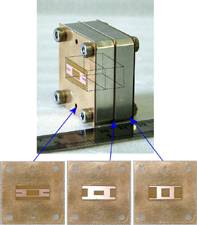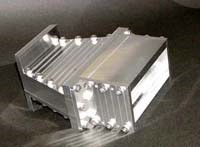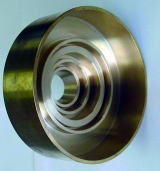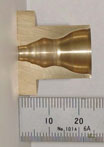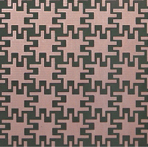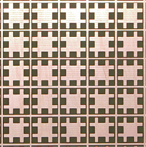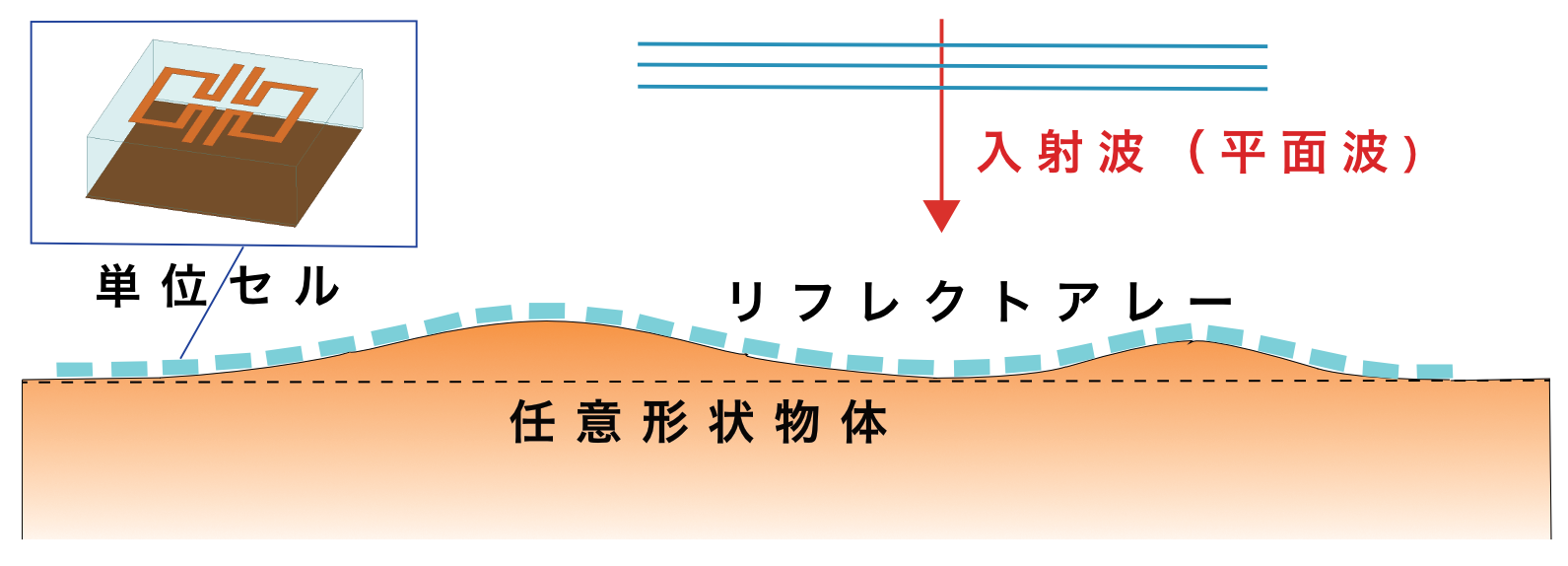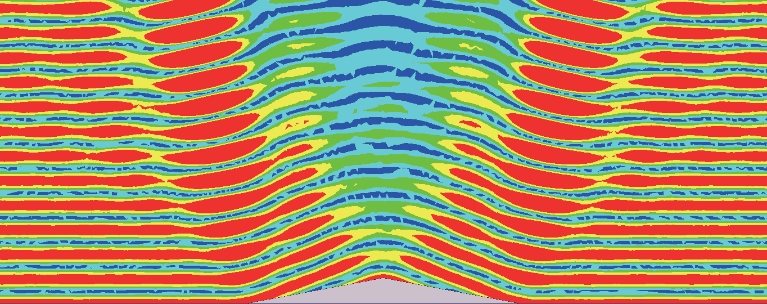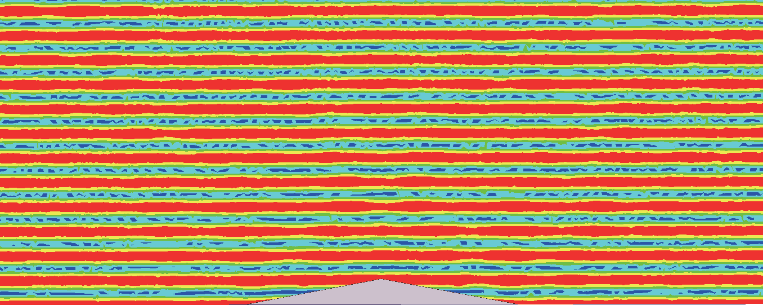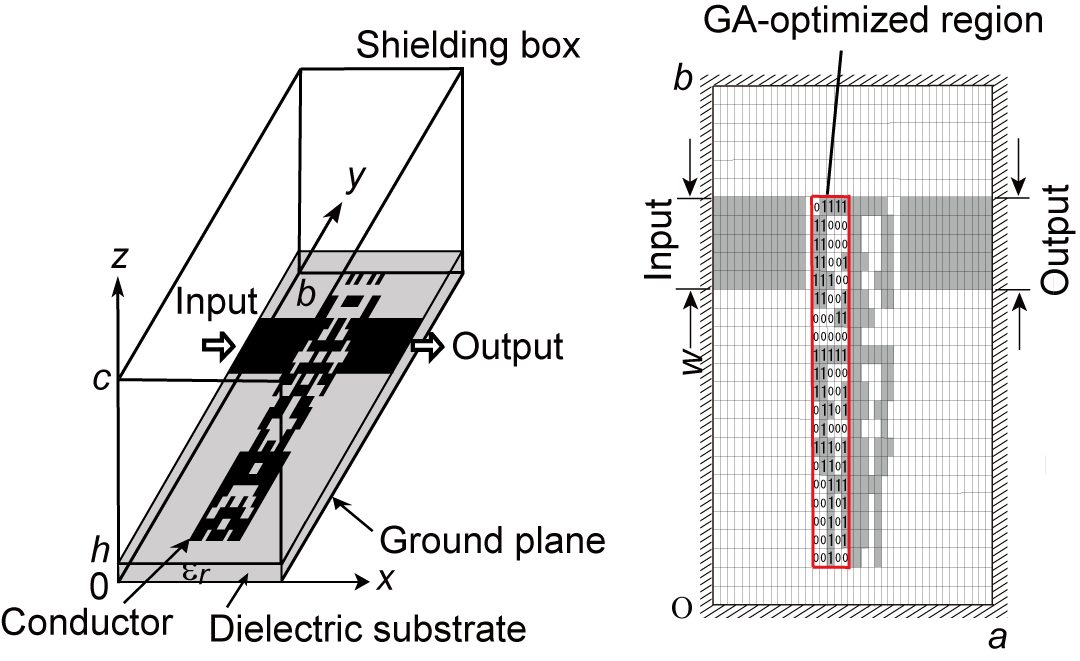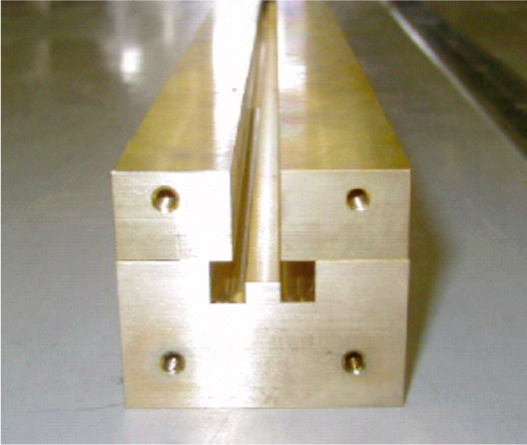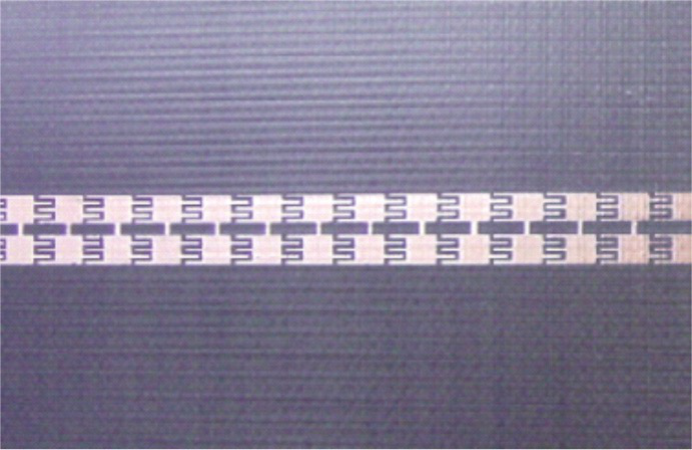Research Topics
- Horn antennas and lens antennas
- Reflectarray and transmitarray
- Electromagnetic cloaking
- BPF, LPF, HPF, and BSF
- Filtering antennas
- Automatic circuit designs using deep learning
Achievements
Waveguide Filters
This bandpass waveguide filter can realize multiple transmission zeros (TZs) in the stopband on both sides of the passband, despite its compact structure. Compared to a cavity resonator, this filter uses a very thin resonator element, and the TZs can be easily realized by designing the shape of the resonator element without using an additional coupling structure. The lower left figure shows the element shape developed using a genetic algorithm (GA), and the lower right figure shows a newly designed element shape. The spectral-domain method of moments is used to design and analyze these resonance elements.
Planar Filters
The basic idea is to treat a BPF as an inverse scattering problem using a one-dimensional Transmission-Line Matrix (TLM) method. In actual design, the filter characteristics tend to shift to the low frequency side due to phase shift at the discontinuities, but more accurate design can be achieved by correcting the impedance discontinuities for the line length based on the LC equivalent circuit.
Multimode Horn Antennas
By modifying the structure of conventional square and conical horns, it is possible to control multimode excitation appropriately and achieve a circular beam with shared orthogonal polarization (bottom left), a shaped beam that efficiently covers circular coverage (bottom center), and low cross-polarization radiation characteristics that can be shared across two frequency bands. The horns are designed using nonlinear programming based on the mode matching method. The horns are easy to fabricate and can be applied to millimeter-wave antennas (see the figure below right). Research is currently underway to achieve even wider bandwidth and higher performance.
Frequency Selective Surfaces
Frequency selective surfaces (FSSs) are often used to share reflector antennas across multiple frequency bands. Conventionally, a multilayer structure was required to obtain sufficient bandwidth, but a new designed geometry, as shown in the figure, has made it possible to achieve wide bandwidth even with a single-layer structure. These FSSs are designed based on the spectral domain moment method using periodic boundary conditions.
Reflectarray
Reflectarray antennas can achieve high gain by arranging microstrip elements of different shapes to form the desired reflected wavefront by controlling the reflection phase characteristics. By using multiple resonance phenomena as a reflectarray element, good reflection phase characteristics can be obtained over a wide bandwidth in orthogonal dual polarization. Unlike a frequency selective surface (FSS), the reflectarray consists of a strip conductor element with a ground conductor plate on one side. The spectral domain moment method used in the analysis of FSS can be applied to the calculation of the reflection phase characteristics.
Carpet Cloaking
Invisibility of objects by radio waves (electromagnetic cloaking technology) has attracted considerable attention. As a carpet cloaking method to control reflected waves, we have proposed a method to realize a predetermined wavefront by controlling the reflection phase distribution of scattered waves in an array of unit cells consisting of microstrip reflectarray elements. The figure below shows an example of calculation for waves scattered by an object. Scattering caused by an object is shown on the left, but if the object is covered by the carpet cloak, as shown on the right, the reflected wave can only be from a plane plate as if the object does not exist, and the object cannot be detected by radio waves.
CRLH Transmissoin Line
In order to design arbitrarily shaped elements for composite right-/left-handed transmission lines, we are studying shape optimization using a genetic algorithm (GA) based on the method of moments (MoM). For metamaterial line elements, we consider the unit cell structure shown in the figure on the right, calculate the unknown currents for each individual conductor mesh area generated by GA using the MoM impedance matrix of the entire mesh partitioned in advance, and define an evaluation function based on transmission characteristics.
CRLH Waveguide
Electromagnetic metamaterials are attracting attention as new functional elements. We have found that the TM01 mode of a circular waveguide and the cutoff characteristics of the fundamental TE mode when the circular waveguide is divided into four parts can be used to obtain the waveguiding characteristics of electromagnetic metamaterials in a certain frequency range, and that the ridge structure of the circular waveguide provides transmission characteristics without band gaps (stopbands) between right- and left-hand passbands. The ridge structure of the circular waveguide provides right-/left-handed bandgap-free transmission characteristics.
Leaky Wave Antenna
Despite the uniform structure of the transmission line, the so-called leaky wave propagates by radiating electromagnetic waves outward from the transmission line. The direction of radiation can be varied by changing the frequency. Therefore, this type of waveguide itself can be used as a frequency swept beam-scanning antenna. We have developed a stub-loaded leaky waveguide (left figure) as a waveguide type antenna and a coupled microstrip line based on a right-/left-handed composite line (right figure) as a planar antenna. The waveguide type has a radiation range of 90 degrees, while the planar circuit type can scan beams in a range of 180 degrees.


